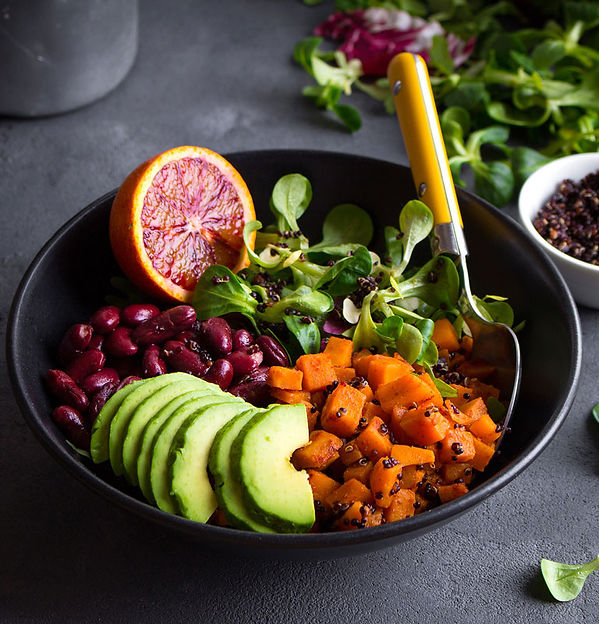
MEAL PLANNING
A common questions I get asked is: "how do you meal plan"? My response is "once you have the knowledge on how to eat healthier, it becomes fun and easy". Lets help you get the knowledge!
One challenge is lack of time or maybe you don't like to cook. Well you don't need to be chef or spend a lot of time in the kitchen in order to eat healthy. And for those that have lack of time there is a way around that.
Below are some examples on how to meal plan. This will help get you started. A side note that makes it easier: you can make the same breakfast & lunch all week then follow the plate method for dinner.


For breakfast and lunch, try to get a lean protein source and a healthy carbohydrate source with each meal then try to find a way to add veggies. Some examples are listed below.
For dinner- shop and plan your meals around the plate method below. Viola, easy!
BREAKFAST
LUNCH
Pick 1 lean protein source
-low fat milk or nut-based milk
-1-2 eggs (nor more than 4 yolks/wk)
-1/3 cup nuts, or 2T seeds (hemp, etc)
- 3oz organic non GMO tempeh or tofu
-Organic vegan protein powder
-1-2T Natural Peanut butter
-6oz low fat yogurt
Pick 1 lean protein source
3oz of lean meat (turkey or chicken breast, fish, shellfish -not fried)
1 low-fat yogurt or 8 oz low-fat milk
½ cup of legumes, lentils, or edamame or seeds (hemp, etc)
1/3 cup nuts or 1-2T natural PB
-3oz organic non GMO tempeh or tofu
~1 cup of healthy carbs
-1 small fruit or 1 cup cut up fruit
-1 serving dried fruit with no added sugar
-Oatmeal, grits, cream of wheat
-Non-refined whole grain products (certain healthy cereals, breads, tortilla, bagels)
-low-fat yogurt or 8oz of low-fat milk
~1 cup of healthy carbs
-1 small fruit or 1 cup cut up fruit
-1 serving dried fruit with no added sugar
-legumes, peas, lentils, potatoes
-Whole grains: noodles, quinoa, teff, amaranth, barley, farro, buckwheat, etc
-low-fat yogurt or 8oz low-fat milk

For DINNER- just make your plate look like the plate method below. Fill 1/2 your plate with non- starchy veggies, 1/4 of your plate with lean protein, and 1/4 of your plate with healthy carbohydrates.
I'm a paragraph. Click here to add your own text and edit me. It's easy.
NON-STARCHY VEGETABLES
Artichoke, asparagus, beans (green, Italian, or wax), bean sprouts, beets, broccoli, Brussel sprouts, cabbage, carrots, cauliflower, celery, cucumber, collard greens, cucumber, eggplant, onion, lettuce, leeks, mushrooms, okra, peppers, radishes, red leaf lettuce, salad greens, spinach, summer squash, tomato, turnips, water chestnuts,
watercress, zucchini
LEAN PROTEIN
Vegan options- Legumes, nuts, seeds, lentils, Tempeh, organic soy based products, nut butters.
Non-vegan -Eggs, low-fat dairy, Fish, turkey or chicken (breast, skinless), boneless pork chop or loin, ham, red meat less than once a week. Do not fry or add unhealthy fat to the protein.
HEALTHY CARBS
(~1 cup cooked):
Grains: Quinoa, rice, whole grain bread, cereal or pasta
Beans & Peas: Dried beans, lentils, lima beans, green peas
Starchy Veggies: White/red potatoes, sweet potato, winter squash, corn
Also, milk, yogurt and fruit
***Yogurt, milk & legumes/lentils count as a protein and carbohydrate source.
To see samples of the options above visit my pantry page.
